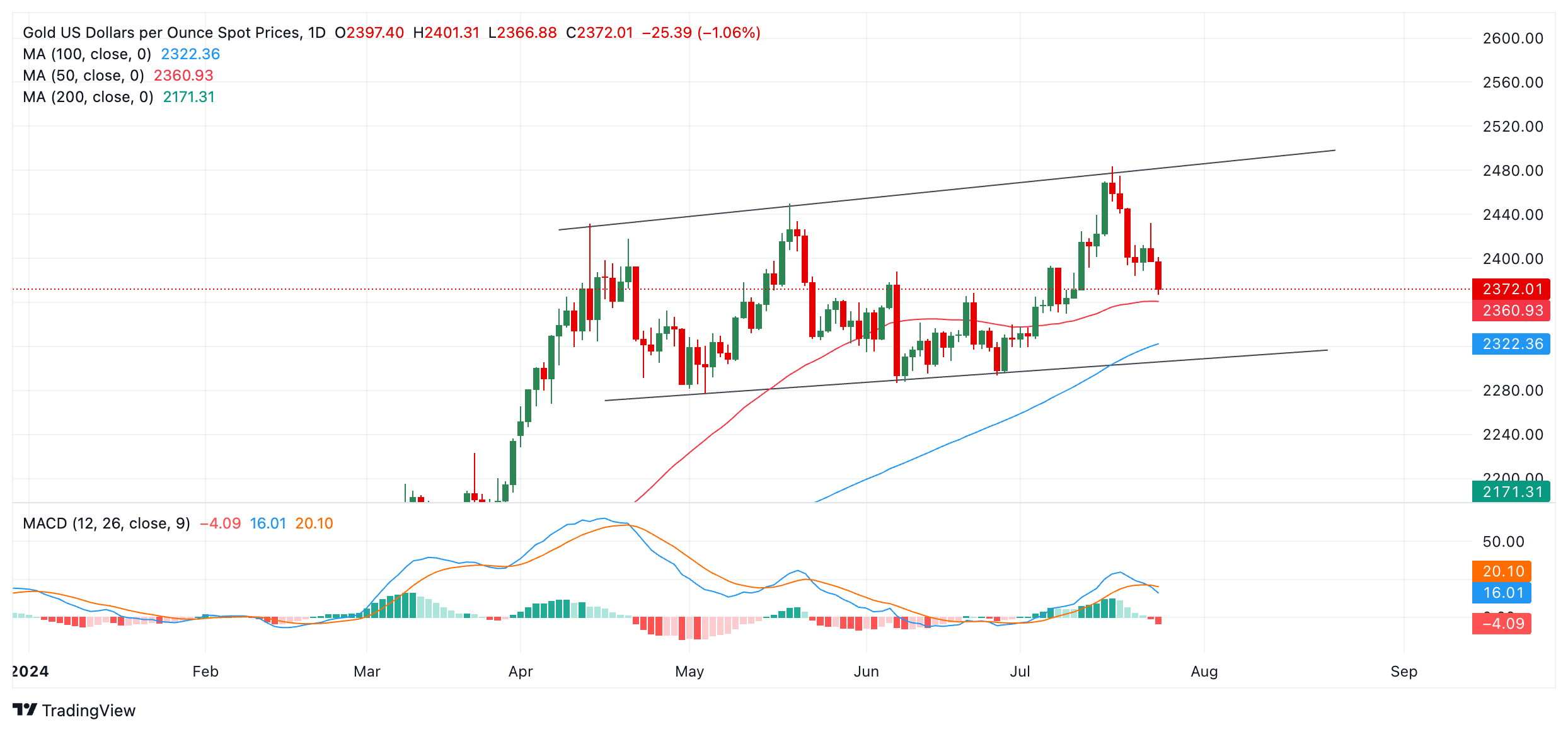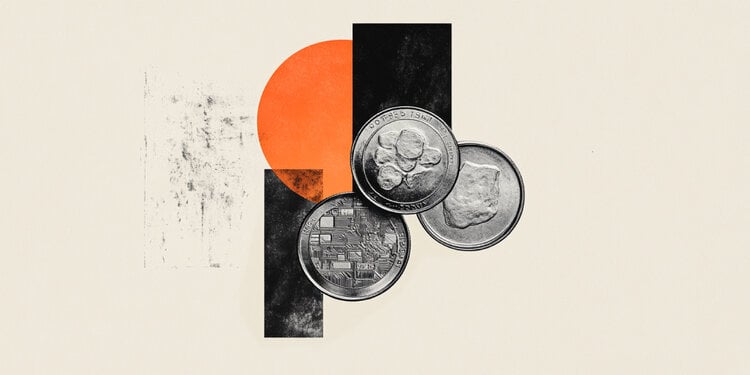- Gold extends the correction and falls to a technical bottom of the range.
- The precious metal is ignoring global growth fears that normally encourage investors to pile into gold.
- Gold joins most other commodities in the sell-off.
He Gold (XAU/USD) weakened on Thursday, trading more than a percentage point lower at $2,370 amid broad declines in stocks and commodities driven by concerns about global growth.
Despite being a safe haven, Gold’s weakness can be attributed to technical selling as it experiences a predicted downward move within its trading range. Moreover, the marginally favourable preliminary S&P Global US Purchasing Managers’ Index (PMI) data for July released on Wednesday may have tempered fears of “stagflation”, which is characterised by economic weakness coupled with high inflation – a scenario in which Gold typically performs well.
Gold falls on technical selling, US PMI data
Gold fell on Thursday after data showed that the S&P Global preliminary composite PMI improved to 55 in July from 54.8 in June. However, the S&P Global manufacturing PMI declined to 49.5 from 51.6, while the services PMI rose to 56.0 from 55.3.
Chris Williamson, Chief Economist at S&P Global Market Intelligence, said, “The preliminary PMI data point to a ‘Goldilocks’ scenario at the start of the third quarter, with the economy growing at a robust pace while inflation moderates.” He added, “In terms of inflation, the July survey saw input costs rising at an increased pace, linked to rising raw material, shipping and labor costs. These higher costs could be passed through to higher selling prices if sustained, or cause pressure on margins.”
Gold’s fall comes despite continued expectations that the Federal Reserve (Fed) will cut interest rates several times before the end of the year. Lower interest rates typically make non-interest-yielding assets like Gold more attractive, boosting demand.
Traders are now awaiting further US economic data to gain clarity on the path of US interest rates. Key releases include advance US second-quarter gross domestic product (GDP) growth data on Thursday and the June Personal Consumption Expenditure (PCE) Price Index report on Friday.
Meanwhile, there has been a dismantling of the “Trump trade”, which has dragged US bond yields lower, positively impacting Gold. In some polls, US Vice President and Democratic candidate Kamala Harris is now leading Republican front-runner and former US President Donald Trump, suggesting a potentially less inflationary outlook for the economy if she wins.
Additionally, physical demand is expected to increase from India, the world’s second-largest consumer of gold, following the government’s reduction of the gold import duty from 15% to 6%.
Gold is also expected to benefit from long-term geopolitical factors, particularly the plans of the BRICS+ nations to replace the US Dollar as the world’s reserve currency with their own Gold-backed alternative. This move is intended to prevent the US from using the Dollar in geopolitical conflicts and sanctions against enemy states.
Technical Analysis: Gold continues to range-bound
Gold is developing a new downward extension within the expanding range it has formed since May. It still appears to be in a sideways market mode rather than a directional trend.
The downtrend is expected to dip towards the bottom and the 100-day simple moving average (SMA) around $2,320. However, the 50-day SMA at $2,360 is likely to present temporary support on the way down.
XAU/USD Daily Chart
The MACD has crossed below its signal line, adding bearish confirmation to the downward move that is currently developing. The MACD tends to work particularly well at signaling price reversals in sideways markets.
A break above the all-time high of $2,483 would signal the establishment of a higher high and suggest the possibility of an upside breakout and an extension of the long-term uptrend.
Such a move could unlock Gold’s next upside target at approximately $2,555-$2,560, calculated by extrapolating the 0.618% Fibonacci ratio of the range height upwards.
Gold
Gold has played a pivotal role in human history as it has been widely used as a store of value and a medium of exchange. Today, apart from its luster and use for jewelry, the precious metal is considered a safe haven asset, meaning it is considered a good investment in turbulent times. Gold is also considered a hedge against inflation and currency depreciation as it is not dependent on any particular issuer or government.
Central banks are the largest holders of gold. In order to support their currencies in turbulent times, central banks tend to diversify their reserves and buy gold to improve the perception of the strength of the economy and the currency. High gold reserves can be a source of confidence in a country’s solvency. Central banks added 1,136 tonnes of gold worth about $70 billion to their reserves in 2022, according to data from the World Gold Council. This is the largest annual purchase on record. Central banks in emerging economies such as China, India and Turkey are rapidly increasing their gold reserves.
Gold has an inverse correlation with the US Dollar and US Treasury bonds, which are the main reserve and safe haven assets. When the Dollar depreciates, the price of Gold tends to rise, allowing investors and central banks to diversify their assets in turbulent times. Gold is also inversely correlated with risk assets. A rally in the stock market tends to weaken the price of Gold, while sell-offs in riskier markets tend to favor the precious metal.
Gold prices can move due to a wide range of factors. Geopolitical instability or fears of a deep recession can cause the price of Gold to rise rapidly due to its status as a safe haven asset. As a non-yielding asset, Gold prices tend to rise when interest rates fall, while rising money prices often weigh down the yellow metal. Still, most of the moves depend on how the US Dollar (USD) performs, as the asset is priced in dollars (XAU/USD). A strong Dollar tends to keep Gold prices in check, while a weaker Dollar is likely to push Gold prices higher.
Source: Fx Street
I am Joshua Winder, a senior-level journalist and editor at World Stock Market. I specialize in covering news related to the stock market and economic trends. With more than 8 years of experience in this field, I have become an expert in financial reporting.








